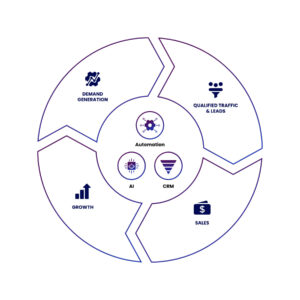In the complex landscape of corporate transactions, divestitures—whether through the sale of subsidiaries, business units, or asset portfolios—have become a routine component of strategic realignments. While companies often focus on operational, financial, and legal implications, one area that continues to pose challenges, especially in the UK, is the treatment of pension schemes. Pension liabilities, particularly defined benefit (DB) schemes, can significantly influence the value, structure, and even the feasibility of a divestiture. For UK-based firms, understanding how pension schemes intersect with divestiture transactions is critical to effective risk management and regulatory compliance.
This article aims to provide UK business leaders, financial professionals, and HR executives with an in-depth understanding of how pension schemes affect divestitures, the regulatory landscape, and best practices to navigate these transactions. Whether your organization is actively pursuing divestiture consulting or exploring strategic options, this guide offers valuable insights.
The Importance of Pensions in Divestiture Transactions
Divestitures are often viewed primarily through the lens of capital allocation, operational efficiency, and shareholder returns. However, when a UK business with a defined benefit pension scheme plans to sell off part of its operations, pension considerations can quickly become a decisive factor. A common pitfall in divestiture consulting engagements is underestimating the legal and financial complexities of pensions—particularly those involving legacy DB schemes with long-term obligations.
A divestiture does not necessarily sever pension obligations unless the pension liabilities are explicitly transferred, which may or may not be possible under the prevailing regulatory and fiduciary frameworks. In most cases, trustees, the Pensions Regulator (TPR), and other stakeholders must approve or at least be consulted regarding any pension-related implications. This is especially important in the UK context, where pensions are governed by a robust legal structure designed to protect members’ interests.
Regulatory Landscape and Stakeholder Considerations
In the UK, the regulatory framework surrounding occupational pensions is governed primarily by the Pensions Act 2004, with oversight from the Pensions Regulator. Trustees of pension schemes play a pivotal role and have a statutory obligation to ensure the security of members’ benefits. Their duties do not change even if a sponsoring employer undergoes a corporate restructuring or divestiture.
One of the key regulatory concerns during a divestiture is the risk of a “material detriment” to the pension scheme’s funding or security. This is especially significant in asset or business sales where the economic strength of the remaining sponsor might weaken. The TPR has the power to issue Contribution Notices (CNs) or Financial Support Directions (FSDs) to companies or individuals it believes are trying to avoid their pension obligations.
For this reason, early and transparent engagement with trustees and the TPR is not just advisable; it is essential. A failure to do so can lead to enforcement actions, transaction delays, or in extreme cases, financial penalties.
Structuring Divestitures with Pension Liabilities
From a structuring perspective, there are several ways to handle pension schemes in a divestiture. The right approach depends on the type of pension scheme, its funding status, and the nature of the transaction.
- Transfer of Scheme with the Business: In some instances, the pension scheme can be transferred to the new owner. This typically requires negotiation and agreement between the buyer, seller, and trustees, as well as approval from the TPR. The buyer must be willing to assume ongoing liabilities, which often demands a significant price adjustment or indemnity.
- Retention of Pension Liabilities: More commonly, the seller retains responsibility for the pension scheme, particularly if it is a multi-employer scheme or the divested business forms only a part of the pension sponsor’s obligations. In such cases, the transaction may need to account for deficit contributions, mitigation payments, or escrow arrangements to satisfy trustees and regulators.
- Creation of a New Scheme: Sometimes, it may be appropriate to establish a new scheme for the divested business, especially if it operates independently post-transaction. However, this is administratively complex and requires comprehensive consultation and legal structuring.
Each of these options involves negotiations, actuarial assessments, and often legal restructuring. This is where divestiture consulting becomes a vital asset, offering strategic advice that integrates financial, legal, and HR perspectives to produce a compliant and commercially sound transaction.
Funding Implications and Risk Mitigation
Defined benefit pension schemes often have funding deficits that can become a major concern in divestitures. The Pensions Regulator expects companies to address any weakening in the covenant supporting a scheme. This might involve:
- Upfront Mitigation Payments: Lump-sum contributions to reduce scheme deficits.
- Escrow Accounts: Holding funds in escrow as a form of contingent support.
- Parent Company Guarantees: Strengthening the covenant through guarantees from other group companies.
- Apportionment Arrangements: Redistributing liabilities among different parts of the corporate group.
Such risk mitigation strategies can enhance transaction certainty and preserve value. However, they require early planning, robust financial modelling, and trustee engagement. For UK businesses, engaging with divestiture consulting experts early in the process can provide clarity on the range of options available and the likely regulatory responses.
Key Role of Trustees and the Importance of Engagement
Pension scheme trustees are not mere bystanders in divestiture transactions—they are key stakeholders. Their fiduciary duty is to the members of the pension scheme, not the employer or the acquiring party. Trustees are empowered to negotiate mitigation terms, request additional funding, or seek intervention from the TPR if they believe the transaction poses a risk to members’ benefits.
Therefore, building trust with trustees through transparent communication, full disclosure, and demonstration of good faith is crucial. This often involves sharing financial details of the deal, long-term business plans, and how the transaction will affect the pension covenant. Companies that sideline trustees often find themselves facing opposition that can derail or significantly delay the deal.
Role of Divestiture Consulting Firms
Divestiture consulting firms play a crucial role in navigating the complexities of pension schemes during corporate sales. Their expertise spans due diligence, stakeholder management, legal structuring, and actuarial assessments—all vital to ensuring a smooth and compliant transaction. In the UK, where pension regulation is detailed and enforcement-oriented, these firms help organizations:
- Identify hidden pension liabilities and covenant weaknesses early.
- Develop deal structures that mitigate regulatory risks.
- Coordinate communication strategies with trustees and the Pensions Regulator.
- Align transaction goals with employee relations and HR policies.
By integrating pension strategy into the broader divestiture process, these firms help preserve deal value and transaction momentum. For companies looking to sell off non-core assets or restructure operations, engaging a divestiture consulting team is not just beneficial—it is often a prerequisite for success.
Post-Transaction Obligations and Continuity Planning
Even after the divestiture is complete, pension obligations may persist, especially if the seller retains responsibility for the scheme. Businesses must plan for:
- Ongoing Contribution Schedules: As agreed with trustees or the TPR.
- Monitoring Employer Covenant Strength: Post-divestiture business health must be regularly evaluated.
- Employee Communication: Clear messaging to affected members regarding any changes in scheme governance or benefits.
Continuity planning is vital to maintaining trust and regulatory compliance. For new owners, assessing inherited pension risks and integrating schemes into their existing corporate structure is equally important.
Conclusion
Pension schemes are a pivotal consideration in UK divestiture transactions. The regulatory oversight, financial impact, and stakeholder dynamics require strategic foresight and professional expertise. Ignoring or underestimating pension obligations can lead to transaction failures, legal liabilities, and reputational damage.
UK businesses contemplating divestitures must treat pension schemes as core components of transaction planning. Early engagement with trustees, clear communication with regulators, and the involvement of experienced divestiture consulting professionals can ensure smoother execution and long-term sustainability.
In an era where corporate agility and portfolio optimization are more important than ever, managing pension liabilities effectively in divestiture transactions is not just a legal obligation—it is a strategic imperative.


